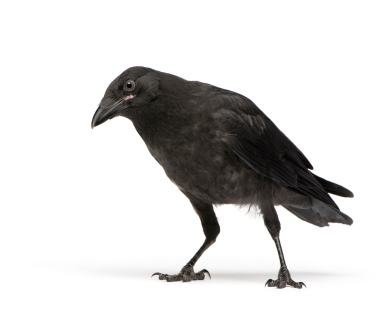Crow’s feet. Most of us start to develop them in our mid to-late 30s and by the time we reach the age of 50, they’re pretty pronounced. This is no surprise because aging skin is associated with a decline in elasticity and moisture. And, let’s face it, if you grew up with light-coloured eyes like I did, you have an even greater tendency to squint in bright light, another factor contributing to those tell tale lines around the eyes. In women in particular, crow’s feet are a rule and not an exception, as aging is accompanied by a loss of estrogen, which has been linked with as great as a 30% loss of collagen in the dermis (the thick, sturdy layer of connective tissue that comprises about 90% of the skin’s thickness) within the first five years of menopause. Collagen, which is the most abundant protein in the body, is responsible for skin’s durability and strength. As it declines, skin starts to sag and wrinkles form. Oh, happy day!
Unfortunately, researchers continue to debunk claims that replacing estrogen can improve the skin’s appearance. That’s the bad news. Likewise, don’t look for expensive moisturizers or facials to do the trick either. However, there are data that suggest that intake of soy isoflavones may improve aging skin. And once again, S-equol is the winner in the isoflavone antiaging department.
A bit of background…
If you are new to Flashfree, you may be unfamiliar with S-equol. Briefly, S-equol is a metabolite of a major soy isoflavone called daidzein. It has a particular affinity for estrogen receptors and possesses some estrogen-type activity of its own. S-equol is produced in the gastrointestinal tract however the ability to actually manufacture it depends on the presence of certain microflora there. Consequently, only 30% to 60% of individuals are actually able to produce S-equol on their own (although this figure is believed to be higher among Asians and vegetarians). (You can read a full range of posts on S-equol here)
Because skin cells responsible for producing collagen express estrogen, researchers believe that S-equol and its affinity for estrogen receptors may impact skin very similar to the way that estrogen does. In fact, when 101 Japanese menopausal women randomly took 10 mg or 30 mg standardized S-equol (SE5-OH) or a sugar pill daily for 12 weeks, that is exactly what they found. Even more interesting was the fact that S-equol was studied in women who do not produce it naturally in their bodies (even though s-equol producers are believed to gain greater benefit from soy products).
Over weeks, researchers measured numerous skin parameters, including crow’s feet, wrinkles, the degree that the skin was hydrated, skin elasticity and loss of water through the skin. To equalize the playing field, measurements were taken in a room that was the same temperature and humidity level each time, and women were instructed to remove any cosmetics using the same cleansing foam 20 minutes before each exam. They were also advised not to alter anything about their diet or sun exposure during the study period.
The findings?
Both 10 mg and 30 mg daily standardized S-equol significantly improved crow’s feet wrinkles/reduced the total wrinkle area compared to placebo tablet. And, 30 mg daily dose also significantly decreased wrinkle depth as well. What’s more, ingesting S-equol supplements did not appear to affect uterine or breast tissues or hormone status, indicating that unlike hormone replacement, using S-equol to combat declining estrogen levels is safe.
So, how does it work?
Although researchers say that the need a longer observation period to confirm S-equol action on skin, they believe that like hormone therapy, it gradually boosts the quantity and quality of skin collagen, and may even help preserve skin hydration from within. Additionally, because skin aging does not solely rely on estrogen levels, S-equol may also act as an antioxidant and help transport nutrients to the upper and middle skin layers. And more importantly, other studies have shown that when Japanese,White, Hispanic and African-American women were compared, the Asian women had the least amount of wrinkling and sagging. If you translate the findings and consider the degree of differences in wrinkling among ethnic groups, it is very possible that S-equol may benefit women living in the U.S. even more than their Japanese peers.
Is it possible that S-equol is truly a Fountain of Youth is in pill form? Yikes! This is pretty darn exciting! Me? I’m off to the store in search of standardized S-equol. Crow’s feet? What crow’s feet?!








Hi, I’m enjoying your blog and would love to talk to you about it. Could you send me an email please.
Screw CrowsFeet! Make them softer with luscious moisturizers and not a part of who you are!